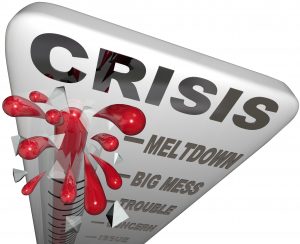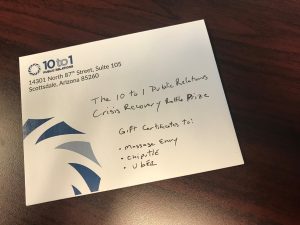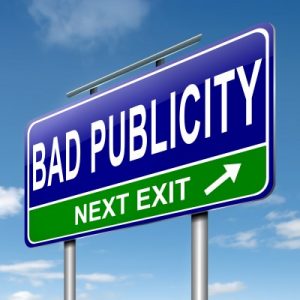Part 2 of What Companies Should do During a Media Crisis: Communicating Internally to Your Staff During a Crisis
A crisis doesn’t only effect customers, it directly effects your staff. It’s your staff that has to communicate with angry, scared customers – calming their fears and resolving their problems. It’s your staff that needs to keep their cool, show empathy and have crazy amounts of patience.

In Part 1 of this four-part series we focused on simplifying and clarifying your goals as a formal statement that all parties can focus on during a crisis. Now let’s focus on the audience that often gets ignored and forgotten during a crisis—your own employees.
But leadership often forgets that employees themselves are often scared during a crisis. They’re scared for their jobs, they’re scared of the extra work that will be required of them, and they’re afraid of not knowing what’s really going on.
There are some important steps company leadership must take (to keep employees on their side).
Leadership needs to be seen and heard, and employees need to be told what the company is committed to doing, and how they’ll be acting in the future (see part one of this series on simplifying and clarifying your goals during a crisis).
- Hold small group meetings with team leaders. Very quickly (within hours) have a series of small group meetings with your senior team leaders. Hold the meeting in-person if possible, but even a video streamed meeting or conference call will work. Tell them what you’re doing, and what they should be telling their teams. Their staff will be looking to their supervisors for instructions, and nothing is scarier to morale that managers not knowing what to do or if they themselves look scared. A five minute meeting can make all the difference to your teams. Make the time.
- Walk among the workers. Have leadership walk through the cubicles and offices thanking employees and portraying confidence- even if leadership doesn’t completely feel that confidence. If you’re in multiple locations this may not be possible, but have local leaders do the walk-around instead. When leadership smiles and displays confidence in employees it goes a long way for morale.
- Have your talking points and be prepared to repeat them. The key points should all revolve around the simplified, clarified statement you set (again, see Part 1 of this series). Stay on your talking points, even when asked lots of specific questions. Stick to the main points while acknowledging that the question is valid but that you’ll make an announcement to all employees about it soon to ensure everyone has the same information at the same time to avoid more rumors or confusion.
- Host a town hall in person or live streaming. After the initial shock, and after you have time to digest the core issues, it’s time to hold a large team meeting (or series of meetings). Your staff may be scared, but you need to show your confidence in them. Tell them that you know that this isn’t easy for them, but that you appreciate them. Tell them that your leadership team will support them and do all they can to help resolve the problem. Answer what questions you can, but only share information you want media or the public to hear. Even if it’s only intended for employees, all it takes is one scared or angry employee to talk to someone they shouldn’t.
- Demonstrate your appreciation. Maybe you can buy breakfast or lunch for your teams as a simple thank you. Maybe you can hand-write a handful of letters to key team members at all levels telling them they are appreciated. Maybe you can send a group email to a select team saying that you appreciate their efforts. Simple acknowledgements and thank yous go a long way in keeping staff on your side.
Your staff is already going to have their hands full dealing with customers and the public, but if you lose the support and confidence in your own employees your task becomes nearly impossible. By investing the time to communicate and solidify support of your internal teams, your likelihood of quickly winning back customers and the public support goes up significantly.
-Written by Josh Weiss









